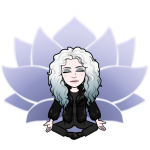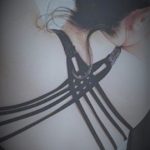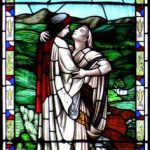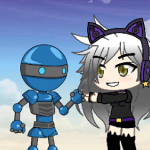A while ago, I wrote a blog and called it Society of the mind: A Rhumba of Ruths after I was charmed by an episode of the Big Bang Theory in which Sheldon has a council of Sheldons and I wanted to know who might be in mine. There was Emergency Ruth, Hippy Ruth, Boro Ruth, Wild and Free Ruth, and finally Team Ruth.
I mentioned a couple of other Ruths but didn’t expand on them as I was following Miller’s Law, a firm favourite in design and UX, which says the magic number of seven (7) pieces or chunks of information, plus or minus two, is the optimum number of things people can remember and manage – so five (5) is just right in Ruth’s world.
I had forgotten all about the blogpost until this week when I started reading Jill Bolte Taylor’s (Dr T’s) Whole Brain Living in which she postulates that the two hemispheres of our brain – the left analytical side and the right creative side – both have an emotional brain and a thinking brain which in total makes four distinct modules of cells. Dr T says that they can be viewed as four characters that make up who we are: Character 1, Left Thinking; Character 2, Left Emotion; Character 3, Right Emotion; and Character 4, Right Thinking.
Whole Brain Living is a follow up to her first book My stroke of Insight in which Dr T described how she had a brain haemorrhage when she was 37 years-old on the left side of her brain, leaving her only with the feeling of love and a sense of great peace and oneness with the universe. Gone was any ego, identity, ability to walk, talk and how to name her emotions. She relearnt everything over the following eight years, and as she did so, she learnt how to decide which old neural thought patterns of sadness, trauma and so on she didn’t wanted to refire in her brain – as neurons fire together to form circuits which then we experience in our bodies as our feelings.
So, in Whole Brain Living, Dr T introduces the four characters of the brain as a conceptual tool to help us all too choose which neural circuits to let go of, in what she calls an anatomy of choice. This is such a liberating idea that I was absolutely delighted to realise that my Rhumba of Ruths blogpost maps, moreorless, onto Dr T’s theory. She even has names for her own Brain Characters too.
Here are mine:
- Character 1 Left Thinking : Emergency Ruth
- Character 2 Left Emotion : Boro Ruth
- Character 3 Right Emotion : Wild and Free Ruth
- Character 4 Right Thinking : Hippy Ruth
My only caveat is that that some of the characteristics of Emergency Ruth and Boro Ruth are conflated. I would probably rename Boro Ruth as BabyBoro Ruth because I only explained half the story and it is my Character 2 self who jumps to conclusions and responds to situations fearfully with the powerlessness of a child instead of remembering that I am a woman with a voice and the capacity to behave fearlessly.
Whilst I was finding the links to the book, I took the quiz at Dr T’s website and apparently, I am Character 2, left brained emotionally dominant. Gah! BabyBoro Ruth runs the show but honestly now I know this, it explains a lot and I am relieved. I often wake up in the night adrenalin pumping, full of anxiety, ruminating on the things I cannot change and frustrated by the things I can. In my original blog, I thought that it was Emergency Ruth, who woke me up and perhaps she does, but only to get things done as she has skills and is super analytical. BabyBoro Ruth doesn’t and she isn’t. She engages in what Martha Beck calls story fondling, and lies there remembering the worst times of my life when there was nothing that I could do to make it better, and in the darkness she infuses those memories with the powerlessness and injustice I felt as a child.
Dr T’s quiz results puts it more optimistically: You are a powerful guardian who holds the past in memory to enhance your safety, which means you can spot injustice, danger, insincerity, and less-than-honourable intentions in the blink of an eye.
This is true. I can spot fishy behaviour from a mile away, but I don’t always want to see things as they really are nor put up the necessary boundaries, and I end up getting hurt. I think this is in part because I am subconsciously trying to rewrite the stories from the past to have a different ending – a happy one – instead of letting them stay where they are, in the past, and releasing all the energy they take to carry with me.
Consequently, Dr T says that BabyBoro Ruth does the following:
- Experiences deep, deep emotions—the highs of love, the depths of despair, and everything in between.
- Experiences life as an ongoing dramatic event, and it can be exhausting.
- Loves more deeply than most people can imagine, which can be both delicious and exhausting.
- To truly live a fulfilling life of peace, ease, and joy, you must bring these characters into conversation with one another so you can choose which should take the lead in any situation.
My big loving tender heart was so cheered by no. 4 and excited by the truth of a blog I wrote one rainy afternoon for a bit of fun that I want to investigate further. I am about half way through reading Whole Brain Living but I have already felt deep in my core some positive shifts. The other day I was dealing with a situation in which I recognised that BabyBoro Ruth was in control and making things worse and Hippy Ruth had to take over. It ended way better than I imagined, but I would really like that peace, ease and joy all the time, and to accept all of me as I am without judgement.
I guess this is what it really means to come home, something I have been wondering about now for some time, but as I think about talking to my Ruths and listening to what they have to say, I feel that I am finally learning, in the words of the late great poet Derek Walcott, how to greet myself with elation, and give back my heart to myself, the one who has loved me my whole life. And, if that’s not coming home, then I am not sure what is, but thankfully, I know my Ruths will tell me.
In Hebrew the name Ruth means beauty and friend. It can also mean truth and pity, and in medieval German/English: sorrow or compassion, and I’ve often wondered how one name can contain so many contradictions, but that is only hint of what a real full human being contains. We are messy and beautiful, whole and at the same time broken, and every time we take a breath, we need to remember that we are all miracles who should be celebrated.
Here’s to my Ruths and what they just might tell me, even my BabyBoro Ruth because as the saying goes from the mouths of babe comes great wisdom. Amen, or should that be ARuth – I’ll keep you posted.






